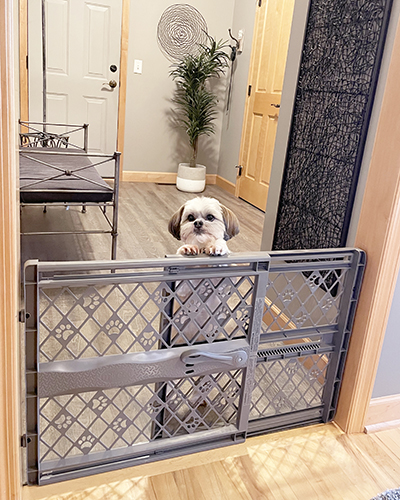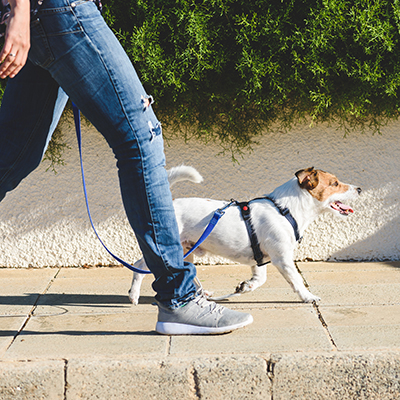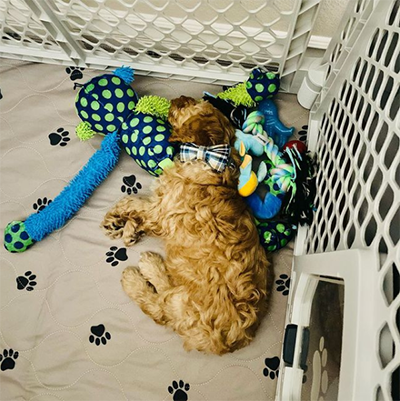How to Prepare Your Pet to be Home Alone
Sep 15th 2021
Over the past year and a half, the pandemic has transformed both humans’ and pets’ lives alike. If anyone has been happy about stay-at-home orders and restrictions, it’s been pets! They have loved having us there with them during the day, and we’ve enjoyed the company of having our pets there for us, too. Adoption rates soared and many families added new, furry members.
Pets have been our support system throughout the pandemic, but now that restrictions are lifting, it’s time that we support them through this transition as well. With work and school going back to in-person activities, our pets may be left behind and wondering where we went. Animals are creatures of habit, so it’s important to ease them into the transition of being home alone during the day again. Continue reading for tips on how to prepare your pet in advance.

Tip 1: Start Introducing Alone Time
The easiest way to ease your pet into staying home alone all day is to gradually increase their alone time. You can start with leaving them alone just for an hour or two, and eventually you can work up to leaving your pet alone for longer periods of time. Every time you return to your pet, give them praise for good behavior and reassure them that you’ll always come home. Continue to monitor your pet’s behavior and readjust their alone time depending on how they’re doing.
Tip 2: Have a Consistent Routine
A few days or weeks before your pet is going to be alone all day, start easing them into a consistent routine. Try to keep your pet’s activities on a set schedule every day so they can get used to a routine. These activities include their meals, walks, play time, and exercise routines. Having an established routine ahead of the transition will make things easier and less stressful for both pets and humans.
Tip 3: Create a Safe Place with a Pet Gate or Pet Yard
Make sure your pet is left in a safe place they are comfortable in. If your pet is crate trained, you can use the crate as a safe place when you leave. If your pet prefers a bigger area, consider using a pet gate or pet yard to block off a specific safe area of your house. Pet gates and pet yards are a great way to designate a safe space for your pet.
Tip 4: Plenty of Exercise
It’s important to give your pet plenty of exercise throughout the day so they don’t have too much expendable energy while you’re gone. We recommend taking dogs on a walk or run before you leave for the day. Cats can greatly benefit from playing with a cat wand in the morning. Early morning exercise will help pets stay calm and prevent them from tearing up the house while you are away. Walks after work will help, too! If you don’t have time for both a morning and evening walk, throw a ball or play hide and seek with treats to get your dog moving around the house. Exercise helps establish their routine, but it also gives them attention and exercise.


Tip 5: Turn on the TV or Radio
Turning on the TV or radio before you leave may help your pet feel less lonely and may prevent boredom and barking. The sight and sounds will stimulate your pet and keep them entertained. The noise from a TV or Radio can also make pets with separation anxiety feel secure. If you own a pet camera (like a Furbo), it may be helpful to talk to your pet during the day to calm them down or reassure them from time to time.
Tip 6: Keep Your Pet Entertained
New toys and are a good distraction to keep your pet out of trouble while you are away, and they can help prevent boredom and restlessness. Treat toys are also a good way to keep your pet’s mind occupied for long periods of time and will keep them from chewing elsewhere. If you don’t have a budget for frequent new toys, try a toy rotation routine where you introduce one of their old toys every couple of days to mix it up. Chewy has a wide range of interactive toys to keep your pet occupied and busy during the day!

Photo Credit: @percy_potter_thecockapoo
Tip 7: Watch for Anxiety
Leaving your pet home alone for longer periods of time may cause anxiety or bad behavior from your pet. They might start to chew things up, bark at and disturb the neighbors, go to the bathroom in the house, or just generally be more anxious. If your pet is showing bad behavior, don’t scold or punish them. Instead, take a pause on training them to be alone. If bad behavior continues, consult your veterinarian or a behavioral specialist.
Tip 8: Hire a Pet Sitter
If your pet continues to struggle staying home alone, consider hiring a pet sitter, dog walker, or sending your pet to daycare during the day. Your pet may benefit from spending the day at daycare or having someone come to your house to spend time with them. Ensure that your pet sitter is taking safety precautions and that your pet is comfortable with them.
Tip 9: Don’t Make a Big Deal about Leaving or Returning to the House
Your pet needs to learn that humans coming and going isn’t a big event. Many people get very excited when they are talking to their pet about leaving the house or even when they return to the house. Pets can pick up on humans’ moods and will take cues from you on how to feel about a situation. It’s best to stay calm and relaxed so your pets don’t get too worked up or worried before you leave.
Keep in mind that going back to work or school full-time again and having a happy pet is doable, it just may take some creativity, patience, and re-training. With preparation, your time apart can be guilt and worry-free—making your return home even sweeter.
